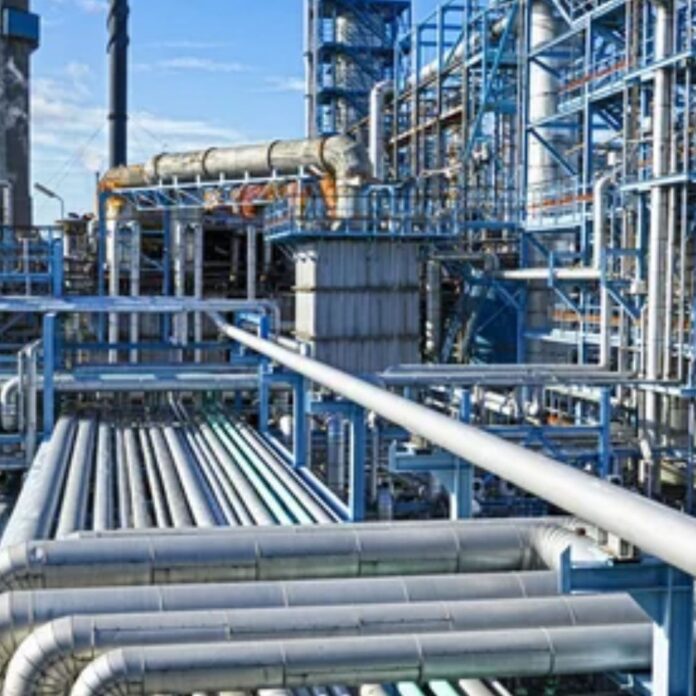In the ever-evolving landscape of industrial infrastructure, certain sectors demand a level of precision and purity that goes beyond conventional standards. This is where process piping services in ultra high purity (UHP) industries come into play. These industries, including semiconductor manufacturing, biotechnology, pharmaceuticals, and nanotechnology, require fluid transport systems that maintain purity levels at parts per trillion (ppt) or even parts per quadrillion (ppq) to ensure optimal performance and product quality.
The journey of process piping services in UHP industries is one of continuous innovation and adaptation. As technology advances and industry demands grow, the importance of reliable, clean, and efficient piping systems becomes increasingly evident. In this blog, we delve into the evolution of process piping services in ultra high purity industries, exploring the critical role they play, the challenges they face, and the advancements that drive them forward.
Understanding Ultra High Purity Piping
At the heart of ultra high purity industries lies the need for exceptionally clean and contaminant-free fluid transport systems. Ultra high purity piping is designed to meet these stringent requirements, employing materials, fabrication techniques, and cleaning procedures that minimize the risk of contamination. The purity levels demanded in these industries are not just about meeting regulatory standards; they directly impact product quality, yield, and overall operational efficiency.
Importance of Process Piping Services in UHP Industries
The significance of process piping services in ultra high purity industries cannot be overstated. These services are integral to maintaining the integrity of fluid transport systems, preventing contamination, ensuring product consistency, and optimizing production processes. Any compromise in the cleanliness or reliability of piping systems can lead to costly downtime, product failures, and reputational damage.
Challenges Faced in Ultra High Purity Piping
The pursuit of ultra high purity comes with its own set of challenges. Contamination risks are omnipresent, requiring stringent design, fabrication, installation, and maintenance practices. Even minor impurities or particles can have a significant impact on product quality, making contamination control a top priority. Additionally, factors such as thermal expansion, pressure fluctuations, and material compatibility must be carefully managed to avoid system failures or leaks.
Evolution of Process Piping Services
Over the years, process piping services in UHP industries have undergone remarkable evolution to meet the escalating demands for cleanliness, reliability, and efficiency. Key advancements include:
Advanced Materials: The use of ultra-high-purity materials such as high-grade stainless steel, specialty alloys, and fluoropolymers has become standard practice to minimize contamination risks and ensure long-term durability.
Precision Fabrication Techniques: Innovations in fabrication techniques, including orbital welding, cleanroom assembly, and automated testing, have improved the accuracy and cleanliness of piping systems.
Specialized Cleaning and Passivation: Rigorous cleaning and passivation procedures, often involving ultrapure water, chemical treatments, and high-pressure flushing, are employed to achieve and maintain ultra high purity levels.
Integrated Monitoring and Control: Advanced monitoring and control systems, such as real-time particle counters, flow sensors, and automated valves, enable continuous monitoring and immediate response to deviations from purity standards.
Compliance and Certification: Adherence to industry standards and certifications, such as ASME BPE (Bioprocessing Equipment) and SEMI standards for semiconductor manufacturing, ensures regulatory compliance and adherence to industry best practices.
Future Trends and Innovations
Looking ahead, the future of process piping services in UHP industries is marked by ongoing innovation and technological advancement. Emerging trends include:
Nanotechnology Integration: Incorporating nanomaterials and nanofabrication techniques to enhance fluid flow, minimize surface adhesion, and reduce contamination risks.
IoT and Data Analytics: Leveraging Internet of Things (IoT) technologies and data analytics for predictive maintenance, performance optimization, and proactive contamination control.
3D Printing and Additive Manufacturing: Exploring the potential of 3D printing and additive manufacturing for customized, complex piping designs with improved performance characteristics.
Green Technologies: Integrating sustainable and environmentally friendly practices, such as water recycling, energy-efficient systems, and green materials, into process piping services.
Conclusion
In conclusion, process piping services have evolved significantly to meet the exacting standards of ultra high purity industries. From advanced materials and fabrication techniques to integrated monitoring systems and future-focused innovations, the journey towards cleaner, more efficient fluid transport continues. As UHP industries drive technological advancements and push the boundaries of purity, process piping services will remain indispensable in their quest for excellence.


